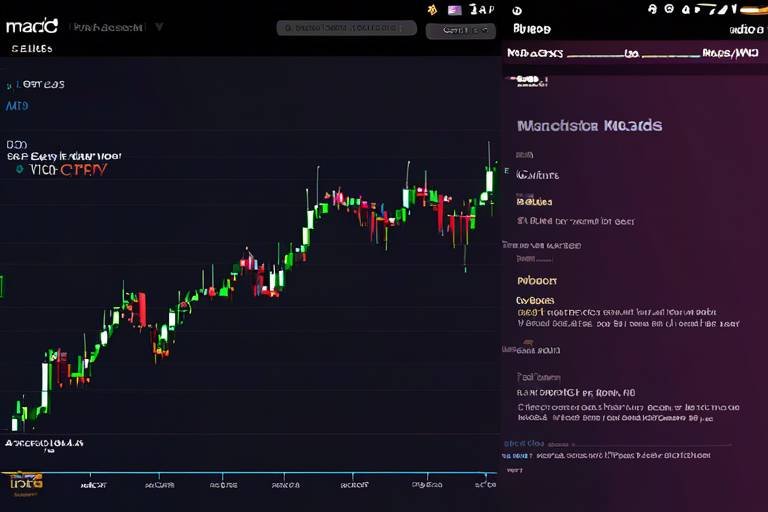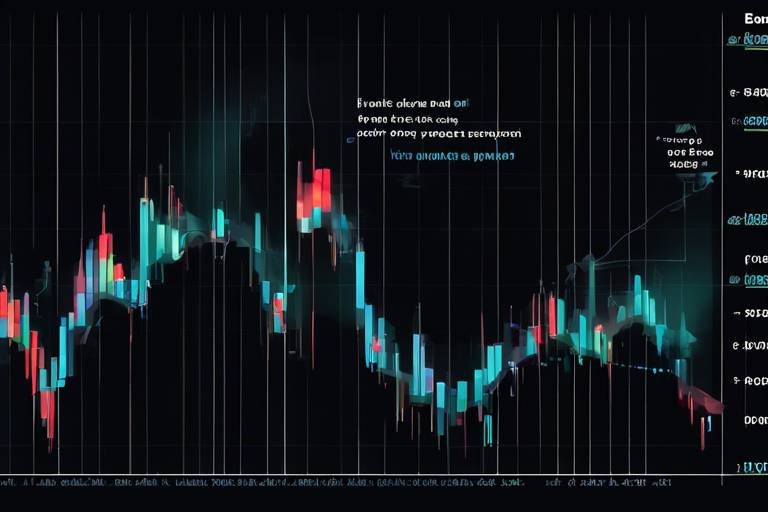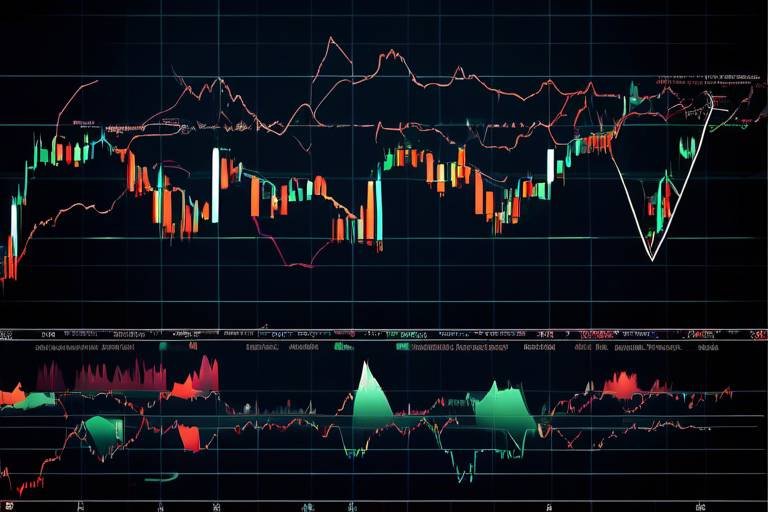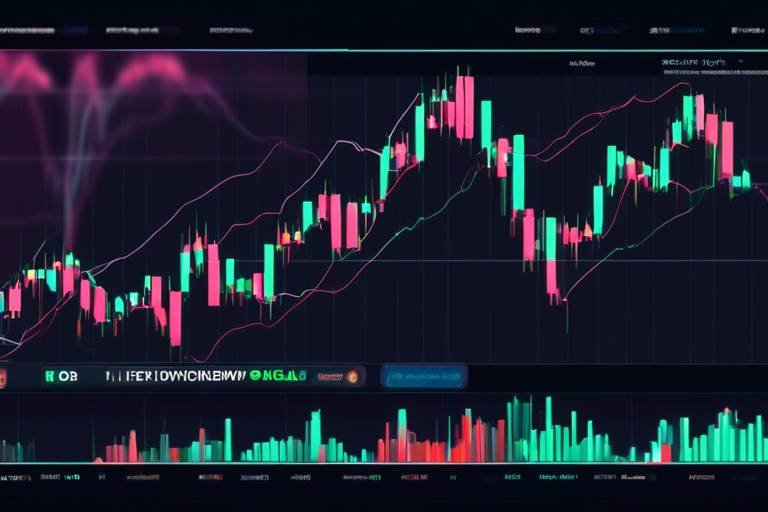How to Create Custom Technical Indicators for Crypto Trading
In the ever-evolving world of cryptocurrency trading, having the right tools at your disposal can make all the difference. Custom technical indicators are like your personal compass in the tumultuous sea of crypto markets, guiding you toward better decision-making and strategy formulation. But how do you create these powerful indicators? In this article, we will explore the process of designing custom technical indicators tailored specifically for cryptocurrency trading. By the end, you'll be equipped with the knowledge to enhance your trading performance in this volatile market.
To start, let’s break down what technical indicators actually are. These are mathematical calculations derived from price, volume, or open interest data. Think of them as the weather forecasts of trading; they help traders predict future price movements based on historical data. In crypto trading, where prices can swing wildly, these tools are invaluable. They help traders identify trends, gauge momentum, and make informed decisions. Without them, navigating the crypto landscape can feel like sailing without a map.
Now that we understand the importance of technical indicators, the next step is to choose reliable data sources. The quality of your indicators is only as good as the data you feed into them. There are numerous platforms and APIs available for accessing real-time and historical cryptocurrency data. Popular options include:
- CoinGecko
- CoinMarketCap
- Binance API
- Kraken API
Each of these platforms offers different features, so it’s essential to evaluate them based on your specific needs, whether that’s real-time data, historical analysis, or market depth.
When creating custom indicators, you’ll want to consider the types of data that can be beneficial. The primary categories include:
- Price Data: This is the core of most technical indicators.
- Volume Data: Essential for understanding market activity.
- Market Sentiment: Gauges the overall mood of the market.
Each type of data serves a unique purpose and can significantly impact the effectiveness of your indicators.
Price data is the foundation of most technical indicators. It’s crucial to collect this data effectively. You can gather price data from various exchanges, ensuring you have access to accurate and up-to-date information. This data can be represented in different forms, such as candlestick charts, line charts, or bar charts. The choice of representation will depend on your personal preference and the specific insights you're looking to gain.
Volume data provides insights into market activity and liquidity. It helps you understand how many assets are being traded over a specific period. Incorporating volume data into your custom indicators can enhance your trading signals, allowing you to identify trends and reversals more effectively. For instance, a price increase accompanied by high volume may suggest a strong bullish trend, while a price increase with low volume could indicate a potential reversal.
Understanding market sentiment can significantly enhance the predictive power of your indicators. Market sentiment reflects the overall attitude of traders toward a particular cryptocurrency. You can gauge sentiment through social media analysis, news articles, and sentiment indices. By integrating sentiment analysis into your trading strategies, you can make more informed decisions that align with the market’s mood.
Once you have a solid understanding of the data you want to use, it’s time to design your custom indicator. This process involves defining its parameters and logic. Start by asking yourself: What do you want your indicator to measure? Is it trend strength, momentum, or something else? The answers to these questions will guide your design process.
Parameters such as timeframes and thresholds are essential in indicator design. Choosing the right timeframe is crucial—shorter timeframes may provide more signals but can also lead to noise, while longer timeframes can smooth out fluctuations but may miss quick opportunities. Adjust these parameters based on your trading style and objectives. Experimentation is key to finding the sweet spot that works for you.
Backtesting is a critical step in validating your custom indicator. This involves running your indicator against historical data to see how it would have performed in the past. By conducting backtests, you can ensure that your indicator performs well under different market conditions. It’s like a dress rehearsal before the big performance—making sure everything runs smoothly.
With your custom indicator designed and tested, the next step is implementation. Integrating your custom indicators into your trading platform can enhance your trading efficiency. Most platforms allow users to import custom scripts, making it easier to apply your indicators in real-time trading scenarios. Familiarize yourself with the integration techniques and tools available on your chosen platform.
Understanding how to integrate your custom indicators with popular trading platforms can significantly improve your trading experience. Platforms like TradingView and MetaTrader offer extensive support for custom indicators. Take the time to learn the specific requirements for integrating your indicators, as this knowledge will empower you to leverage them effectively.
Lastly, continuous monitoring and adjustment of your custom indicator are vital for maintaining its effectiveness. The crypto market is dynamic, and what works today may not work tomorrow. Regularly evaluate your indicator's performance and be prepared to make adjustments as needed. This iterative process ensures that your indicators remain relevant and effective in changing market conditions.
Q: Can I create multiple custom indicators?
A: Absolutely! Many traders use a combination of indicators to enhance their strategies.
Q: How often should I backtest my indicators?
A: It's a good practice to backtest your indicators regularly, especially after significant market changes.
Q: What if my custom indicator isn’t performing well?
A: Don’t be afraid to tweak your parameters or even redesign your indicator based on the insights you gather.

Understanding Technical Indicators
When diving into the world of cryptocurrency trading, one of the first things you’ll encounter is the concept of technical indicators. These powerful tools are not just fancy charts or graphs; they are mathematical calculations derived from historical price, volume, or open interest data. Understanding them can significantly enhance your trading strategy, allowing you to make more informed decisions in a market that can be as unpredictable as a roller coaster ride.
So, what exactly makes technical indicators so essential? In essence, they serve as a roadmap for traders, helping to identify potential entry and exit points in the market. By analyzing past price movements and trading volumes, indicators can provide insights into future market behavior. This predictive capability is crucial, especially in the volatile world of cryptocurrencies, where prices can swing wildly in a matter of minutes.
Here's where it gets interesting: technical indicators can be categorized into two main types—leading indicators and lagging indicators. Leading indicators attempt to predict future price movements, giving traders a heads-up before trends materialize. Think of them as your early warning system. On the other hand, lagging indicators confirm trends after they have occurred, acting more like a rearview mirror. While both types have their merits, savvy traders often combine them to create a comprehensive trading strategy.
To better illustrate the significance of these indicators, let’s take a look at a few popular ones:
| Indicator | Type | Purpose |
|---|---|---|
| Moving Average (MA) | Lagging | Smooths price data to identify trends over a specific period. |
| Relative Strength Index (RSI) | Leading | Measures the speed and change of price movements to identify overbought or oversold conditions. |
| Bollinger Bands | Lagging | Indicates volatility and potential price reversals by using standard deviations. |
| MACD (Moving Average Convergence Divergence) | Lagging | Shows the relationship between two moving averages of a security’s price. |
As you can see, each indicator serves a unique purpose, and understanding their strengths and weaknesses can empower you to make better trading decisions. However, it’s crucial to remember that indicators are not foolproof. They should be used in conjunction with other analysis methods and risk management strategies to navigate the unpredictable waters of crypto trading effectively.
In summary, technical indicators are invaluable tools that provide insights into market trends and price movements. By understanding how to use them effectively, you can enhance your trading strategies and improve your chances of success in the ever-changing landscape of cryptocurrency. So, are you ready to dive deeper and start crafting your own custom indicators?

Choosing the Right Data Sources
When it comes to crafting custom technical indicators for crypto trading, one of the most crucial steps is . The effectiveness of your indicators largely depends on the quality and reliability of the data you use. With the cryptocurrency market being notoriously volatile, having access to accurate and timely data can make all the difference in your trading success. So, where do you start? Well, let’s dive into the world of data sources!
There are numerous platforms and APIs available that provide real-time and historical cryptocurrency data. Some popular options include:
- CoinGecko: Offers comprehensive data on cryptocurrency prices, trading volumes, and market capitalization.
- CoinMarketCap: A widely used resource for tracking the market capitalization, price, and volume of various cryptocurrencies.
- Binance API: Provides access to real-time trading data from one of the largest cryptocurrency exchanges in the world.
- Kraken API: Another reputable exchange that offers a robust API for accessing market data.
Each of these platforms has its own unique features, so it’s essential to evaluate them based on your specific needs. For instance, if you’re looking for comprehensive historical data, CoinGecko and CoinMarketCap are excellent choices. However, if you prefer real-time trading data, connecting to an exchange API like Binance or Kraken would be more beneficial.
Moreover, consider the type of data you need for your indicators. Different types of data can offer various insights. Here’s a quick breakdown of the primary data types:
| Data Type | Description | Importance |
|---|---|---|
| Price Data | Current and historical prices of cryptocurrencies. | Essential for calculating most technical indicators. |
| Volume Data | The amount of a cryptocurrency traded over a specific period. | Indicates market activity and liquidity. |
| Market Sentiment | General feelings and attitudes of traders toward a cryptocurrency. | Helps gauge potential price movements. |
By understanding the different data types and their significance, you can make informed decisions about which sources to utilize. Remember, the goal is to create indicators that are not only effective but also tailored to your trading style. The right data sources can empower you to develop indicators that provide accurate signals, helping you navigate the unpredictable waters of cryptocurrency trading.
In conclusion, selecting the right data sources is a foundational step in creating custom technical indicators. Take your time to explore various platforms, assess their offerings, and choose the ones that align with your trading objectives. After all, in the fast-paced world of crypto trading, having the right information at your fingertips can be the key to unlocking your trading potential.

Types of Data for Indicators
When it comes to creating custom technical indicators for cryptocurrency trading, understanding the types of data you can utilize is crucial. Just like a chef needs the right ingredients to whip up a delicious dish, traders need the right data to craft effective indicators. There are three primary categories of data that can significantly enhance your trading strategies: price data, volume data, and market sentiment.
Price data is often considered the backbone of technical analysis. It's the most straightforward type of data, reflecting the actual prices at which cryptocurrencies are traded. This data can be collected in various timeframes, from minute-by-minute updates to daily closes. The key here is to be consistent with your timeframe, as mixing different timeframes can lead to confusing signals. For instance, if you decide to analyze hourly price data, stick with it throughout your analysis to maintain clarity.
On the other hand, volume data provides insights into the strength of price movements. High trading volume often indicates strong interest in a particular cryptocurrency, suggesting that price changes are likely to be more sustainable. Conversely, low volume might signal potential reversals or lack of interest. By incorporating volume data into your indicators, you can gauge whether a price movement is backed by significant market activity or if it’s merely a fleeting trend. To illustrate the relationship between price and volume, consider the following table:
| Price Movement | Volume Level | Interpretation |
|---|---|---|
| Price Increase | High | Strong bullish signal |
| Price Increase | Low | Potential false breakout |
| Price Decrease | High | Strong bearish signal |
| Price Decrease | Low | Possible reversal |
Lastly, we have market sentiment, which adds a layer of psychological insight to your trading strategy. Market sentiment reflects the overall attitude of traders towards a specific cryptocurrency—are they feeling bullish or bearish? Understanding sentiment can help you anticipate market movements before they happen. Sentiment can be gauged through various means, including social media analytics, news articles, and sentiment analysis tools. By integrating sentiment data with your price and volume indicators, you can create a more holistic trading strategy that takes into account not just the numbers, but the feelings and perceptions of the market participants.
In summary, when designing your custom indicators, consider leveraging all three data types: price, volume, and market sentiment. Each type provides unique insights that can enhance your trading decisions. By combining these elements, you can develop a powerful toolkit that helps you navigate the often tumultuous waters of cryptocurrency trading.
- What is the best type of data for creating indicators? Each type of data has its strengths; price data is fundamental, volume data indicates market strength, and sentiment data provides psychological insights. Combining them is often the best approach.
- How can I collect data for my indicators? You can use various platforms and APIs that provide real-time and historical cryptocurrency data. Popular options include CoinGecko, Binance API, and CryptoCompare.
- Is it necessary to use all three data types? While it's not strictly necessary, using all three can provide a more comprehensive understanding of market dynamics and improve the effectiveness of your indicators.
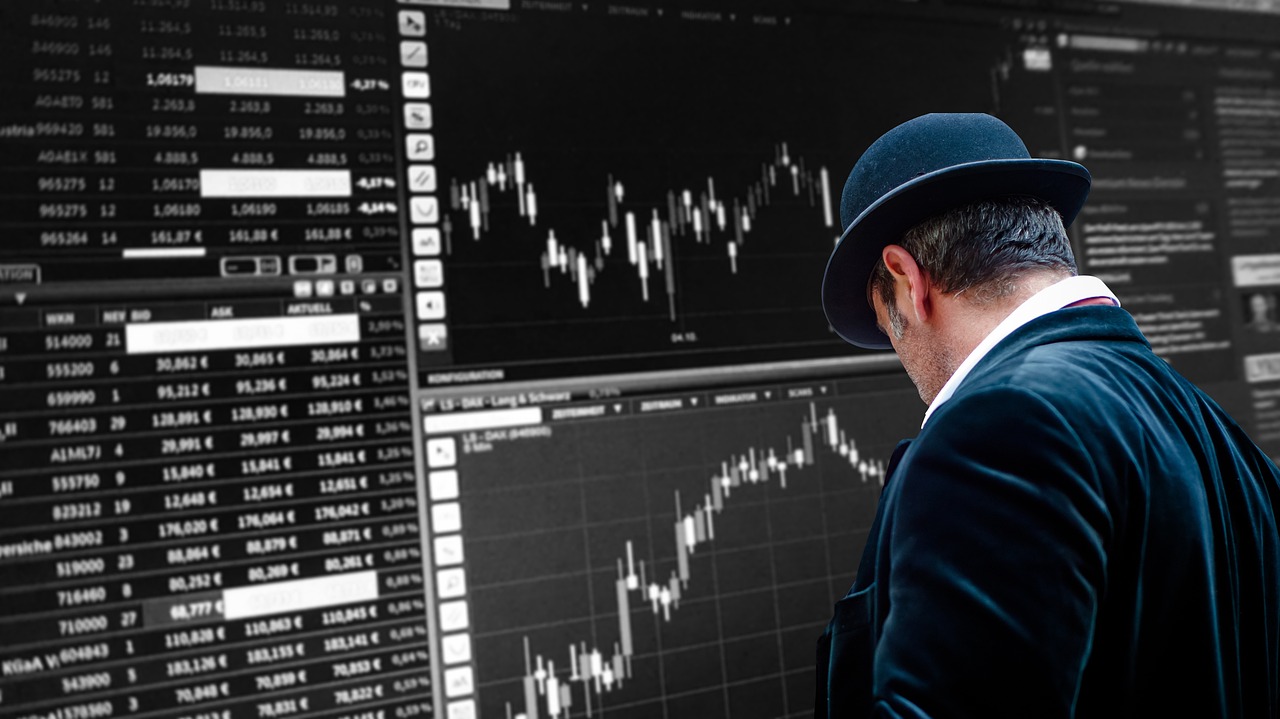
Price Data
When it comes to creating custom technical indicators, is the bedrock upon which everything else is built. Think of it as the foundation of a house; without a solid base, everything else is at risk of collapsing. Price data encompasses the historical and real-time information regarding the price movements of cryptocurrencies. This data is crucial because it provides the raw material needed for mathematical calculations that form the backbone of technical indicators.
To effectively utilize price data, you first need to understand the different components that can be extracted from it. These components include open, high, low, and close prices, often referred to as OHLC data. Each of these elements plays a significant role in technical analysis:
| Component | Description |
|---|---|
| Open | The price at which a cryptocurrency starts trading at the beginning of a specific time period. |
| High | The highest price reached during that time period. |
| Low | The lowest price recorded during the same period. |
| Close | The price at which the cryptocurrency finishes trading at the end of that time period. |
Collecting price data can be done through various platforms and APIs that offer real-time and historical data. Utilizing these resources allows traders to analyze trends and patterns that can inform their trading strategies. For instance, many traders rely on price charts to visualize movements over different time frames, which can be instrumental in identifying potential entry and exit points.
Moreover, when developing custom indicators, it’s essential to consider the time frame for your price data. Are you looking at minute-by-minute changes, hourly trends, or daily movements? Each time frame can yield different insights and can significantly affect the signals generated by your indicators. For instance, short-term traders might focus on minute or hourly data, while long-term investors might prioritize daily or weekly data.
In conclusion, price data is not just numbers on a chart; it’s a powerful tool that, when used correctly, can enhance your trading strategy. By understanding how to collect, interpret, and apply this data, you can create custom indicators that not only reflect market conditions but also align with your trading objectives. So, the next time you sit down to analyze the market, remember that your success hinges on how well you leverage this invaluable data.
- What is price data in cryptocurrency trading?
Price data refers to the historical and real-time information regarding the price movements of cryptocurrencies, including open, high, low, and close prices. - Why is price data important for technical indicators?
Price data serves as the foundation for technical indicators, enabling traders to forecast future price movements based on historical trends. - How can I collect price data?
You can collect price data through various platforms and APIs that provide real-time and historical cryptocurrency data.

Volume Data
When it comes to trading cryptocurrencies, serves as a crucial indicator of market activity. It's like the heartbeat of the market; without it, traders would be navigating in the dark. Volume data reflects the number of assets traded during a specific timeframe, providing insights into the strength or weakness of a price trend. For instance, if a cryptocurrency is experiencing a price increase but the volume is low, it might signal a lack of conviction among traders, indicating that the trend could be short-lived. Conversely, high volume during a price rise usually suggests strong buyer interest, which can lead to a more sustainable upward trend.
To effectively incorporate volume data into your custom indicators, you should consider the following aspects:
- Volume Trends: Analyzing volume trends over different periods can help identify potential reversals or continuations. For example, if you notice a consistent increase in volume over several days while the price is rising, it may reinforce the bullish sentiment.
- Volume Oscillators: These tools can help you gauge the momentum behind price movements. A common example is the On-Balance Volume (OBV), which adds volume on up days and subtracts it on down days, helping traders visualize the relationship between price and volume.
- Volume Spikes: Sudden spikes in volume can indicate significant market events, such as news releases or major buy/sell orders. Being aware of these spikes can provide traders with opportunities to enter or exit positions effectively.
Incorporating volume data into your custom indicators can significantly enhance your trading strategy. For example, you might create an indicator that combines price movement with volume thresholds to generate buy or sell signals. If the price of a cryptocurrency crosses above a certain level with accompanying high volume, it could signal a strong buy opportunity.
Additionally, volume data can be visualized through charts, making it easier to spot trends and anomalies. Many trading platforms allow you to overlay volume bars on price charts, providing a visual representation of how volume correlates with price movements. This visual aid can be invaluable in making informed trading decisions.
In conclusion, understanding and utilizing volume data is essential for developing robust custom technical indicators in cryptocurrency trading. By paying close attention to how volume interacts with price movements, you can enhance your ability to predict market trends and make more informed trading decisions.
- What is volume data in cryptocurrency trading? Volume data refers to the total number of units of a cryptocurrency that have been traded during a specific period. It reflects market activity and can indicate the strength of price movements.
- How can I use volume data in my trading strategy? You can use volume data to confirm trends, identify potential reversals, and gauge market sentiment. By analyzing volume alongside price movements, you can create more effective trading signals.
- What are some common volume indicators? Common volume indicators include On-Balance Volume (OBV), Volume Moving Average, and the Accumulation/Distribution line. These tools help traders assess the relationship between price and volume.

Market Sentiment Analysis
Market sentiment analysis is a crucial component in the toolkit of any savvy cryptocurrency trader. In essence, it involves gauging the overall attitude of the market participants towards a particular cryptocurrency or the market as a whole. Imagine it as the emotional pulse of the crypto world, where traders' feelings and perceptions can significantly influence price movements. Understanding this sentiment can provide you with a competitive edge, allowing you to make informed decisions rather than relying solely on historical data or technical indicators.
One effective way to analyze market sentiment is through the use of social media platforms and news outlets. These sources can provide real-time insights into how traders are feeling about specific coins or the market in general. For instance, a surge in positive tweets about Bitcoin could indicate bullish sentiment, while an increase in negative news articles might suggest a bearish outlook. This is where tools like sentiment analysis algorithms come into play, helping traders to quantify the emotional tone of the market.
Moreover, there are several key indicators that can help in assessing market sentiment. These include:
- Fear and Greed Index: This index measures the emotions driving the market, ranging from extreme fear to extreme greed. A high reading might suggest that the market is overheated, while a low reading could indicate a buying opportunity.
- Social Media Sentiment: Tracking hashtags and mentions on platforms like Twitter can offer insights into public sentiment. Tools like CryptoMood or Sentiment Analysis API can automate this process.
- Trading Volume: Analyzing the volume of trades can also reflect sentiment. High volume during a price increase may indicate bullish sentiment, while high volume during a price drop could suggest panic selling.
Integrating market sentiment analysis into your trading strategy can be incredibly beneficial. For instance, if your technical indicators suggest a buying opportunity, but sentiment is overwhelmingly negative, it might be wise to reconsider your position. Conversely, if sentiment is positive and your indicators align, it could reinforce your decision to enter the market.
In conclusion, market sentiment analysis is not just an ancillary tool; it's a vital piece of the puzzle in cryptocurrency trading. By keeping your finger on the pulse of the market's emotions, you can enhance your decision-making process, ultimately leading to more successful trades. Remember, in the volatile world of crypto, understanding the crowd's mood can be just as important as understanding the numbers.
Q1: What is market sentiment analysis?
Market sentiment analysis is the process of gauging the overall attitude of market participants towards a specific cryptocurrency or the market in general. It can help traders make informed decisions based on collective emotions rather than just technical data.
Q2: How can I measure market sentiment?
You can measure market sentiment through various indicators such as the Fear and Greed Index, social media sentiment analysis, and trading volume analysis. Tools and platforms are available to automate this process for better accuracy.
Q3: Why is market sentiment important in crypto trading?
Market sentiment is important because it can significantly influence price movements. Understanding the emotional tone of the market can provide insights that complement technical indicators, leading to more informed trading decisions.

Designing Your Custom Indicator
Creating a custom indicator is like crafting a unique recipe tailored to your specific taste. It involves a careful blend of ingredients—parameters and logic—that suit your trading style and objectives. The process can seem daunting at first, but breaking it down into manageable steps makes it much more approachable. So, how do you go about designing an indicator that truly works for you?
First off, you need to **define the parameters** of your indicator. Think of parameters as the rules of your recipe. They dictate how your indicator behaves under various market conditions. Common parameters include timeframes, which can range from minutes to days, and thresholds that trigger buy or sell signals. For instance, if you're a day trader, you might set a shorter timeframe to capture rapid price movements, while a long-term investor might prefer a daily or weekly view.
Once you’ve defined your parameters, it’s time to delve into the **logic** behind your indicator. This is where the magic happens! You need to determine how your indicator will interpret the data it receives. Will it use simple moving averages, exponential moving averages, or perhaps a combination of different calculations? The logic you choose should align with your trading strategy. For example, if you’re looking to capitalize on momentum, you might want to incorporate indicators that measure the speed of price changes.
After you've laid out the groundwork, it’s essential to **backtest your indicator**. This step is akin to tasting your dish before serving it. You want to ensure that your indicator performs well under various market conditions. Backtesting involves running your indicator against historical data to see how it would have performed in the past. You can use platforms like TradingView or MetaTrader for this purpose. Look for metrics such as win rate, average profit per trade, and drawdown to evaluate its effectiveness.
But don’t stop there! Once you have a working indicator, consider **monitoring and adjusting** it regularly. Markets are ever-changing, and what works today might not work tomorrow. Just like a chef tweaks a recipe based on seasonal ingredients, you should refine your indicator based on ongoing performance. This could mean adjusting the parameters, changing the logic, or even incorporating new data sources. Continuous improvement is key to staying ahead in the volatile world of crypto trading.
In summary, designing your custom indicator involves a blend of defining parameters, establishing logic, backtesting, and ongoing adjustments. It’s a dynamic process that requires patience and experimentation. Remember, the goal is to create a tool that enhances your trading strategy and helps you navigate the complexities of the cryptocurrency market with confidence.
- What are custom technical indicators? Custom technical indicators are unique tools designed by traders to analyze market data, tailored to their specific trading strategies.
- How do I choose the right parameters for my indicator? Start by identifying your trading style and objectives. Consider factors like timeframe and market conditions that align with your strategy.
- What is backtesting, and why is it important? Backtesting involves testing your indicator against historical data to see how it would have performed, ensuring its reliability before live trading.
- Can I use multiple indicators together? Absolutely! Many traders use a combination of indicators to confirm signals and improve their decision-making process.

Defining Parameters
When it comes to crafting a custom technical indicator for crypto trading, is like setting the rules of a game. You wouldn't want to play without knowing the rules, right? Parameters dictate how your indicator behaves and interacts with the market data. The most critical parameters to consider include timeframes, thresholds, and calculation methods. Each of these elements plays a significant role in shaping the effectiveness of your indicator.
First off, let's talk about timeframes. The timeframe you choose determines how frequently your indicator will update and how it reacts to market movements. For instance, if you're a day trader, you might prefer a shorter timeframe, like 5 or 15 minutes, to capture quick price changes. On the other hand, if you're adopting a long-term strategy, you might lean towards daily or weekly charts. Choosing the right timeframe is crucial because it influences the sensitivity of your indicator. A shorter timeframe can lead to more signals, but it may also result in more noise, while a longer timeframe can smooth out fluctuations but might miss critical short-term opportunities.
Next up are thresholds. These are the specific values that trigger buy or sell signals in your indicator. Think of thresholds as the goalposts in your trading strategy. Setting these too tight can lead to false signals, while setting them too loose may cause you to miss out on profitable trades. For example, if you're using a moving average crossover strategy, you might set a threshold that requires the faster moving average to cross above the slower moving average by a specific percentage before signaling a buy. It’s all about finding that sweet spot that aligns with your trading style and risk tolerance.
Now, let's not forget about calculation methods. The way you calculate your indicators can vary widely, and this is where your creativity can shine. Some common methods include simple moving averages (SMA), exponential moving averages (EMA), and relative strength index (RSI). Each method has its own strengths and weaknesses. For instance, while SMA is straightforward and easy to understand, EMA gives more weight to recent prices, making it more responsive to sudden market changes. Understanding these methods and how they fit into your overall strategy is vital for developing a robust custom indicator.
To summarize the key parameters you should focus on:
- Timeframes: Choose based on your trading style (short-term vs. long-term).
- Thresholds: Set values that trigger buy/sell signals to avoid false positives.
- Calculation Methods: Select appropriate methods that align with your trading strategy.
In conclusion, defining parameters for your custom technical indicator is not just a technical task; it's an art form that requires a deep understanding of both market behavior and your personal trading philosophy. By carefully selecting your timeframes, thresholds, and calculation methods, you can create an indicator that not only enhances your trading strategy but also adapts to the ever-changing landscape of cryptocurrency markets.
Q: What is the best timeframe for crypto trading?
A: The best timeframe depends on your trading style. Day traders often use shorter timeframes, while long-term investors may prefer daily or weekly charts.
Q: How do I choose the right threshold for my indicator?
A: Experiment with different thresholds during backtesting to find a balance between capturing signals and avoiding false positives.
Q: Can I use multiple indicators together?
A: Absolutely! Many traders use a combination of indicators to confirm signals and improve their overall strategy.

Backtesting Your Indicator
Backtesting is an essential step in the development of your custom technical indicator. It’s like a dress rehearsal for your trading strategy—ensuring everything fits perfectly before the big performance. By simulating your indicator's performance against historical data, you can gauge its effectiveness and make necessary adjustments before risking real capital. But how do you go about backtesting effectively? Let’s break it down.
First, you need to gather historical data that corresponds with the timeframe and assets your indicator is designed for. This data can include price movements, volume, and even market sentiment. The more comprehensive your dataset, the more reliable your backtest will be. You can source this data from various platforms and APIs, which provide both real-time and historical information. It’s crucial to ensure the data is clean and free from anomalies that could skew your results.
Once you have your data, the next step is to define the rules of your trading strategy. This includes:
- Entry signals: What conditions need to be met for you to enter a trade?
- Exit signals: When will you close a trade? Is it based on profit targets or stop-loss levels?
- Position sizing: How much of your capital will you allocate to each trade?
With these rules in place, you can start running your backtest. Most trading platforms have built-in backtesting tools that allow you to input your indicator and trading rules. As the backtest runs, it simulates trades based on historical data, providing you with valuable metrics such as:
| Metric | Description |
|---|---|
| Win Rate | The percentage of trades that were profitable. |
| Average Profit/Loss | The average amount gained or lost per trade. |
| Maximum Drawdown | The largest drop from a peak to a trough in your account balance. |
| Profit Factor | The ratio of gross profit to gross loss. |
After running your backtest, it’s time to analyze the results. Look for patterns in your data. Did your indicator perform well during certain market conditions? Were there periods of significant drawdown? Understanding these aspects can help you refine your indicator further. Don’t be afraid to tweak the parameters and run multiple backtests to find the optimal settings.
Lastly, remember that past performance is not always indicative of future results. While backtesting provides valuable insights, it’s essential to stay adaptable and ready to adjust your strategies as market conditions evolve. Think of it as tuning a musical instrument—you must keep adjusting to ensure the best sound, even after the initial setup.
In conclusion, backtesting your custom indicator is a critical process that can significantly enhance your trading strategy. By carefully analyzing historical data and refining your approach based on the results, you can increase your chances of success in the unpredictable world of cryptocurrency trading.
- What is backtesting? Backtesting is the process of testing a trading strategy using historical data to evaluate its effectiveness before applying it in real-time trading.
- How do I gather historical data for backtesting? You can gather historical data from various trading platforms, financial websites, or APIs that offer cryptocurrency data.
- What metrics should I look for in backtesting results? Key metrics include win rate, average profit/loss, maximum drawdown, and profit factor.
- Can I trust backtesting results? While backtesting provides valuable insights, it’s essential to remember that past performance does not guarantee future results.

Implementing Your Indicator in Trading
Once you've designed and backtested your custom technical indicator, the next thrilling step is to implement it in your trading routine. This phase can feel like stepping onto a rollercoaster; the excitement is palpable, but so is the uncertainty. To make this process smoother and more effective, you need to understand how to integrate your indicator with popular trading platforms and develop best practices for its usage.
First and foremost, integration is crucial. Most traders use platforms like MetaTrader, TradingView, or ThinkorSwim, each offering unique features for custom indicators. Depending on the platform you choose, the integration process can vary significantly. For instance, in MetaTrader, you can create a custom script using MQL language, while TradingView allows you to write scripts in Pine Script. Familiarizing yourself with the scripting language of your chosen platform is essential. This knowledge will empower you to translate your indicator's logic into a format that the platform can understand.
Moreover, once integrated, it’s vital to ensure that your custom indicator is set up correctly. This means double-checking that all parameters are accurately defined and that the indicator is functioning as intended. You wouldn't want to ride a rollercoaster with a safety harness that isn’t secured, right? A quick test run will help you verify that the signals generated align with your expectations.
Next, let’s talk about monitoring your indicator. Just like a gardener tends to their plants, you need to keep an eye on your indicator’s performance over time. Markets are dynamic; what works today might not yield the same results tomorrow. Therefore, regularly reviewing your indicator’s effectiveness is crucial. You might want to set specific intervals for evaluations—perhaps weekly or monthly—to assess its performance. If you notice any discrepancies or if market conditions change significantly, be prepared to make adjustments.
Furthermore, consider creating a trading journal where you log your trades and the signals generated by your custom indicator. This practice not only helps you track performance but also allows you to identify patterns and refine your strategy over time. A well-maintained journal can be your best friend in understanding the nuances of your trading behavior and the efficacy of your indicators.
Lastly, don’t forget about community feedback. Engaging with fellow traders can provide invaluable insights. Platforms like Reddit, Discord, or trading forums are great spaces to share your experiences and learn from others. You might discover new ways to enhance your indicator or even collaborate on new projects. After all, trading doesn’t have to be a solitary journey; sharing knowledge can lead to mutual growth.
In summary, implementing your custom indicator in trading is a multi-faceted process that requires careful integration, ongoing monitoring, and community engagement. By following these steps, you can enhance your trading efficiency and make informed decisions that align with your trading goals.
- What is the best platform for implementing custom indicators? The best platform often depends on your trading style and preferences. MetaTrader, TradingView, and ThinkorSwim are popular choices, each with its strengths.
- How often should I monitor my custom indicator? Regular monitoring is essential. Setting specific intervals, such as weekly or monthly, can help you stay on top of its performance.
- Can I share my custom indicators with other traders? Absolutely! Sharing your indicators can foster collaboration and provide new insights. Just ensure you explain the logic behind them for better understanding.
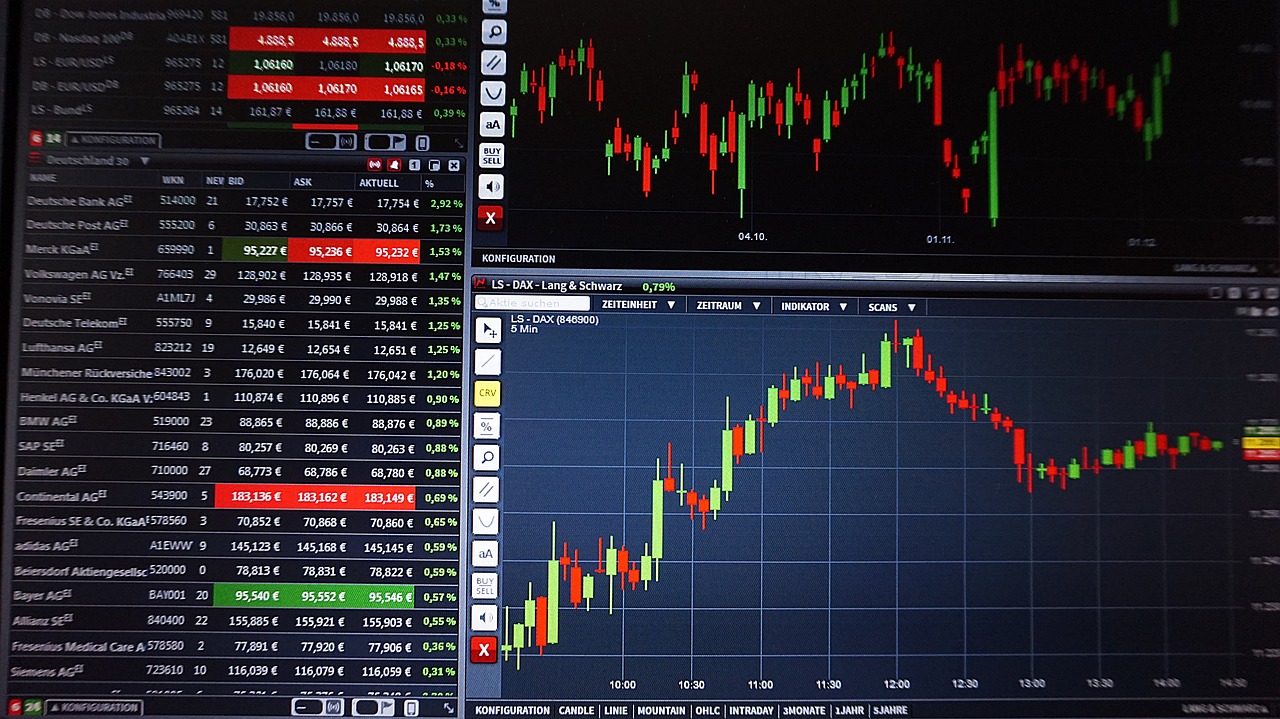
Integration with Trading Platforms
Integrating your custom technical indicators with trading platforms is a crucial step that can significantly enhance your trading efficiency. Imagine you’ve just spent hours designing the perfect indicator—now it’s time to make it work for you! Different trading platforms offer various ways to integrate custom indicators, and choosing the right method can streamline your trading process and improve your decision-making.
First, you need to identify the trading platform you plan to use. Popular platforms like MetaTrader 4/5, TradingView, and ThinkorSwim all have their own unique integration methods. Understanding these methods is essential for seamless integration. For instance, MetaTrader allows users to write custom scripts in MQL4 or MQL5, which can be used to create indicators from scratch or modify existing ones. On the other hand, TradingView uses Pine Script, a user-friendly language that lets you design indicators quickly and easily.
Here’s a brief overview of integration methods for some popular platforms:
| Platform | Integration Method | Language Used |
|---|---|---|
| MetaTrader 4/5 | Custom Scripts | MQL4/MQL5 |
| TradingView | Pine Script Editor | Pine Script |
| ThinkorSwim | ThinkScript | ThinkScript |
Once you’ve chosen your platform and scripting language, the next step is to write the code for your custom indicator. This might sound daunting, but many platforms offer comprehensive documentation and community forums where you can find examples and get help. If coding isn’t your strong suit, there are also pre-built indicators available that you can modify to fit your needs.
After coding your indicator, the next step is testing it within the platform. Most platforms allow you to run your indicator in a simulated environment before going live. This is a crucial phase where you can assess how well your indicator performs under various market conditions without risking real money. It’s akin to a dress rehearsal before the big show—ensuring everything is in place and functions as expected.
Finally, once your indicator is integrated and tested, you’ll want to monitor its performance continuously. Markets are dynamic, and what works today might not work tomorrow. Regularly revisiting your indicator’s settings and performance will help you stay ahead of the curve. Remember, trading is not just about having the right tools; it’s about adapting those tools to the ever-changing landscape of the market.
In summary, integrating your custom technical indicators with trading platforms is not just about technical know-how; it’s about creating a workflow that enhances your trading strategy. By understanding the integration methods available and continuously refining your approach, you can maximize the effectiveness of your custom indicators and elevate your trading game.
- What is a custom technical indicator? A custom technical indicator is a tool designed specifically for a trader's unique strategy, utilizing specific data and parameters that cater to their trading style.
- Can I use custom indicators on any trading platform? Not all platforms support custom indicators, so it’s essential to check the compatibility of your chosen platform.
- How do I test my custom indicator before using it in live trading? Most trading platforms offer a demo mode where you can simulate trades using your custom indicator without risking real money.

Monitoring and Adjusting Your Indicator
Once you've designed and implemented your custom technical indicator, the journey doesn’t end there. In fact, this is just the beginning! is crucial to ensure it remains effective and relevant in the ever-changing landscape of cryptocurrency trading. Think of it like tuning a musical instrument; if you don’t keep it in tune, your music will sound off-key, no matter how talented you are. So, how do you keep your indicator in top shape?
First and foremost, you need to establish a routine for monitoring performance. This involves regularly checking how well your indicator is predicting price movements and the overall market trends. You might want to create a simple performance report that tracks key metrics, such as:
| Metric | Description |
|---|---|
| Accuracy Rate | Percentage of correct predictions made by the indicator. |
| Signal Frequency | How often the indicator generates buy or sell signals. |
| Drawdown | Maximum observed loss from a peak to a trough. |
By keeping an eye on these metrics, you can identify patterns and determine whether your indicator is still aligned with your trading strategy. If you notice a decline in accuracy or an increase in drawdown, it might be time to make some adjustments. But what should you adjust?
Adjustments can range from tweaking the parameters of your indicator to incorporating new data sources. For instance, if your indicator is based on price data alone, consider adding volume data or market sentiment analysis to enhance its predictive power. It’s like adding spices to a dish; sometimes, a little extra flavor can make all the difference!
Moreover, it’s also vital to stay updated on market trends and news that could impact the cryptocurrency landscape. The crypto market is notorious for its volatility, and external factors can significantly influence price movements. By staying informed, you can proactively adjust your indicators to account for these shifts. Regularly reviewing your trading strategy in light of new information ensures that your approach remains robust and adaptable.
Lastly, don't forget the importance of backtesting your adjustments. Whenever you make changes to your indicator, it's essential to run backtests to see how those changes would have performed in the past. This not only helps validate your adjustments but also builds confidence in your trading decisions. Remember, the goal is to create an indicator that not only works today but can also adapt to tomorrow’s market challenges!
- How often should I monitor my custom indicator? It's advisable to monitor your indicator at least weekly, but daily checks can provide more immediate insights, especially in a volatile market.
- What should I do if my indicator is not performing well? Consider adjusting its parameters, incorporating additional data sources, or even redesigning the logic behind the indicator.
- Can I automate the monitoring of my indicator? Yes, many trading platforms offer automation tools that can help you set alerts and generate performance reports.
Frequently Asked Questions
- What are technical indicators in crypto trading?
Technical indicators are mathematical formulas that analyze price, volume, and market data to help traders predict future price movements. They are essential tools that can guide your trading decisions by providing insights into market trends.
- How do I choose the right data sources for my indicators?
Selecting reliable data sources is crucial for creating effective indicators. Look for platforms and APIs that provide real-time and historical cryptocurrency data, ensuring that the information you use is accurate and up-to-date.
- What types of data should I consider for my custom indicators?
When designing custom indicators, consider using various types of data such as price data, volume data, and market sentiment. Each type plays a significant role in enhancing the predictive power of your indicators.
- How can I effectively collect price data?
To collect price data effectively, utilize APIs from reputable exchanges or data aggregators. Ensure you capture data at the right intervals to match your trading strategy, whether it’s intraday or long-term.
- Why is volume data important for trading indicators?
Volume data offers insights into market activity and liquidity. By incorporating volume into your indicators, you can identify trends and validate price movements, making your trading signals more reliable.
- What is market sentiment analysis and why is it useful?
Market sentiment analysis gauges how traders feel about a particular cryptocurrency. Understanding sentiment can enhance your indicators by providing context to price movements, helping you make more informed trading decisions.
- What steps are involved in designing a custom indicator?
Designing a custom indicator involves defining its parameters, such as timeframes and thresholds, and establishing the logic behind it. This process ensures that your indicator aligns with your trading style and objectives.
- How do I backtest my custom indicator?
Backtesting involves running your indicator against historical data to evaluate its performance. This step is crucial for ensuring that your indicator can adapt to various market conditions before you implement it in live trading.
- What are the best practices for integrating my indicator into trading platforms?
To integrate your custom indicator, familiarize yourself with the trading platform’s API and scripting capabilities. Follow the documentation provided by the platform to ensure a smooth integration process.
- How often should I monitor and adjust my custom indicator?
Continuous monitoring is vital for maintaining the effectiveness of your custom indicator. Regularly assess its performance and make adjustments as necessary to adapt to changing market conditions and ensure optimal results.


